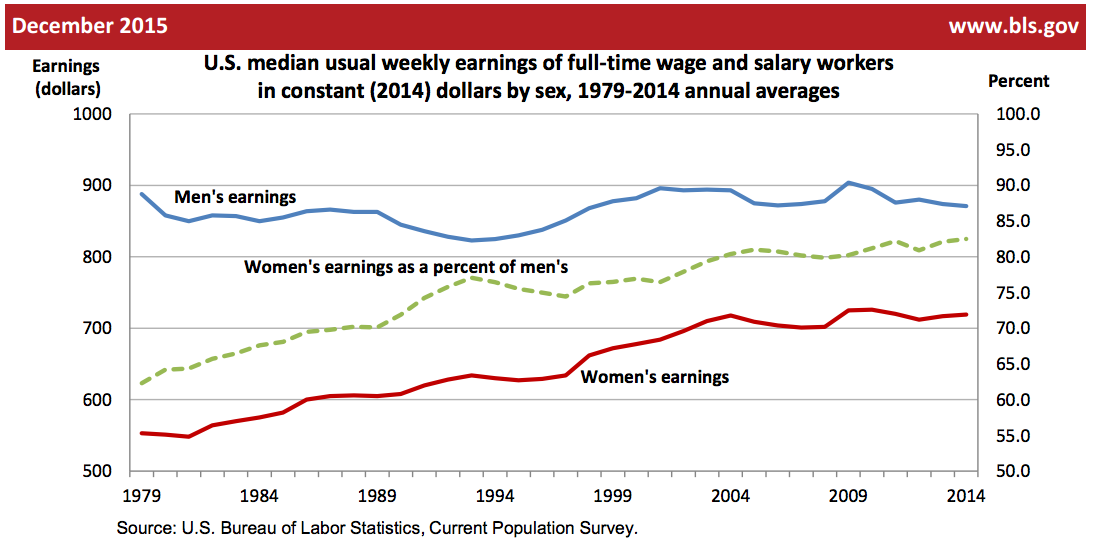At Least There is One Job Without a Gender Pay Gap
If we are actively managing our low performers and not keeping them around to be used as ballast for the annual employee review period, there should be little reason not to adopt more fair and equitable pay based on a set figure and adjusted for cost of living each year.
Article II, Section 1 of the US Constitution sets the President's annual salary. The figure has been amended over the years (most recently in 1999), establishing the Commander-In-Chief's yearly pay at $400,000. Fortunately, this is a set figure, one that cannot be changed during a President's term in office. No matter who wins the White House this election, we can be assured that, man or woman, at least the paycheck would be the same.

Many companies like to think they operate in a meritocracy, where compensation and opportunity are rewards that correlate directly to an individual's talents, abilities, and effort. Looking at the graph above, how can this be the case in any but a small number of employers? Even harder to rationalize are the many studies that show equal pay and equal opportunity lead to better bottom line performance for a company. (Here is one such study: Why Diversity Matters, McKinsey & Company)
Why not implement a system where everyone in a job title makes the same wage? I'm certain some arguments would center on the lack of ability to reward top performers, however it turns out that performance management systems are seriously flawed too.
Only one person typically feels neurologically rewarded by the PM [performance management] exercise. It’s not the high performer, but the senior executive who oversees the ranking system." - Kill Your Performance Ratings - strategy+business
In the strategy+business article above, the authors describe the SCARF hypothesis (Status, Certainty, Autonomy, Relatedness, Fairness) and how these organizational factors can lead to employees feeling under appreciated. I encourage you to read the whole article and think about your last yearly rating conversation.
If we are actively managing our low performers and not keeping them around to be used as ballast for the annual employee review period, there should be little reason not to adopt more fair and equitable pay based on a set figure and adjusted for cost of living each year. This approach doesn't allow for gender, ethnicity, and sexual orientation to influence the equation and will help bring parity to the gender and diversity pay gaps.




